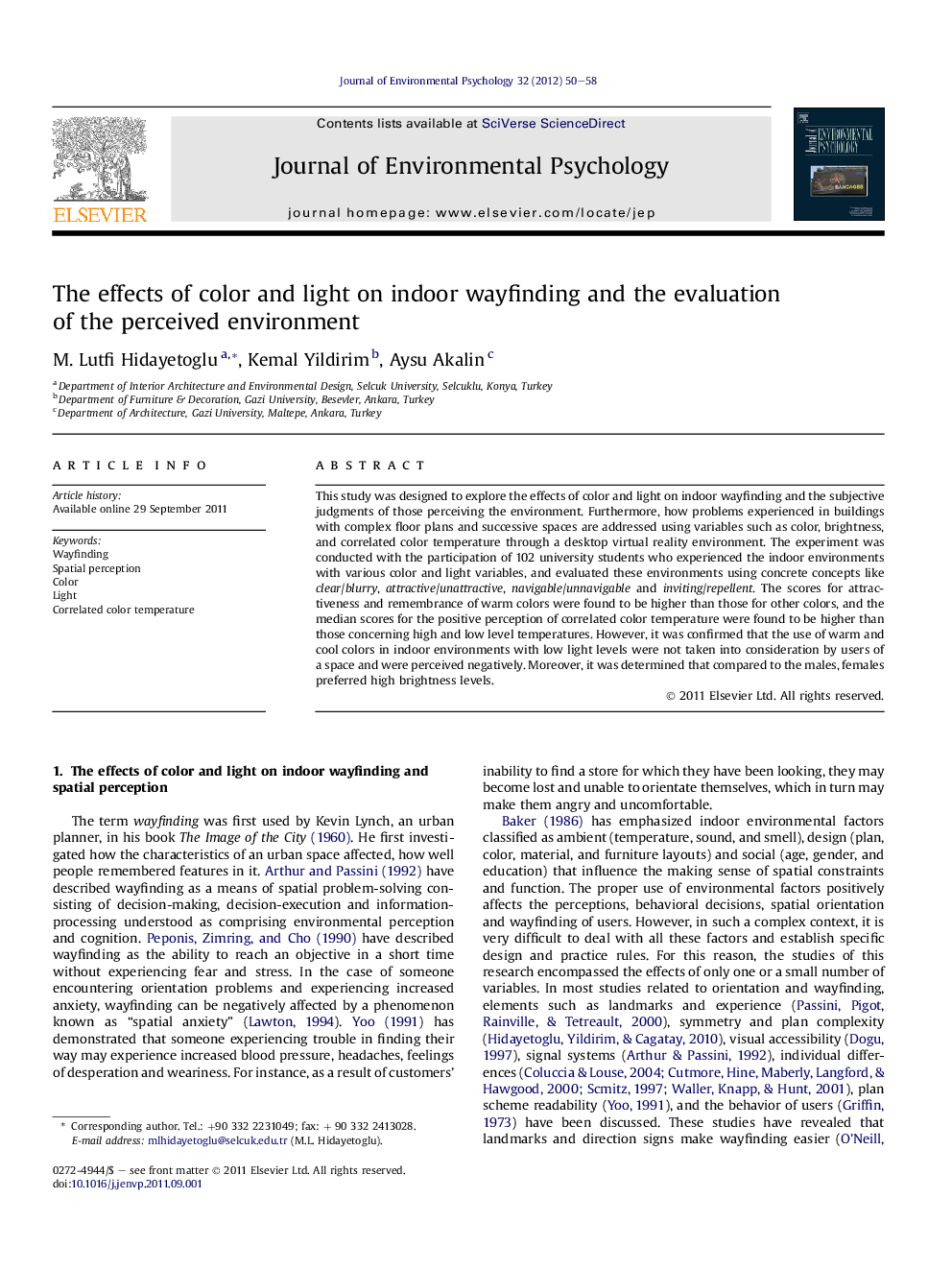| Article ID | Journal | Published Year | Pages | File Type |
|---|---|---|---|---|
| 885680 | Journal of Environmental Psychology | 2012 | 9 Pages |
This study was designed to explore the effects of color and light on indoor wayfinding and the subjective judgments of those perceiving the environment. Furthermore, how problems experienced in buildings with complex floor plans and successive spaces are addressed using variables such as color, brightness, and correlated color temperature through a desktop virtual reality environment. The experiment was conducted with the participation of 102 university students who experienced the indoor environments with various color and light variables, and evaluated these environments using concrete concepts like clear/blurry, attractive/unattractive, navigable/unnavigable and inviting/repellent. The scores for attractiveness and remembrance of warm colors were found to be higher than those for other colors, and the median scores for the positive perception of correlated color temperature were found to be higher than those concerning high and low level temperatures. However, it was confirmed that the use of warm and cool colors in indoor environments with low light levels were not taken into consideration by users of a space and were perceived negatively. Moreover, it was determined that compared to the males, females preferred high brightness levels.
► Using color as landmarks increases the readability of a space. ► Attractiveness and memorability of warm colors were higher than for other colors. ► Cool colors and high brightness levels could help people be orientated in a space. ► Warm colors and high brightness level can facilitate memory of spaces.
